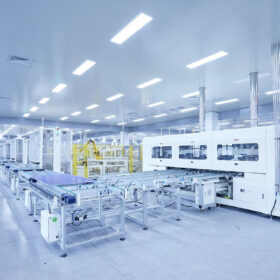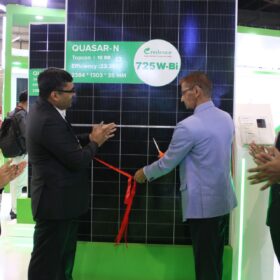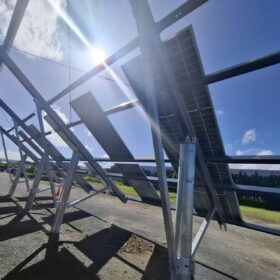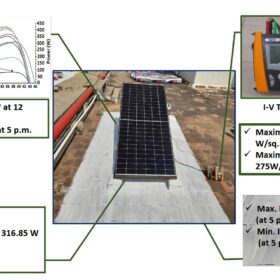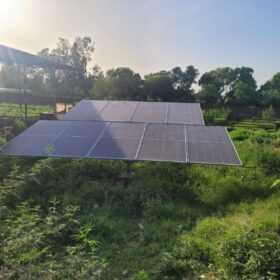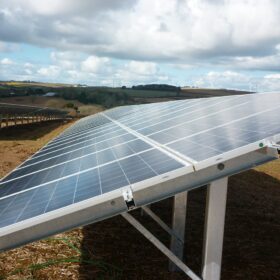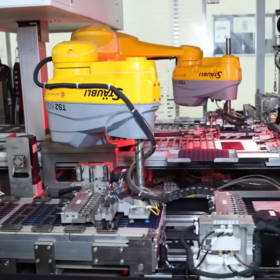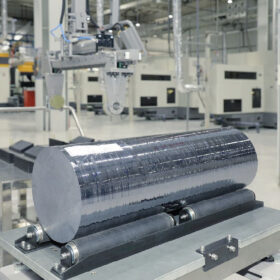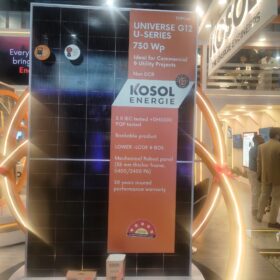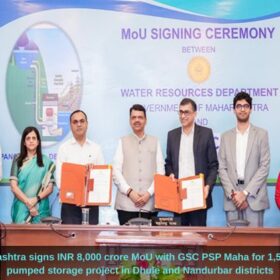Solving the UV problem of n-type solar
Laboratory testing has revealed that some negatively-doped, “n-type” tunnel oxide passivated contact (TOPCon) and heterojunction (HJT) solar modules are susceptible to ultraviolet (UV) light-related damage and degradation. That could mean trouble down the line, if modules in the field begin to show UV-related performance loss. Manufacturers are implementing solutions at cell and module level.
Credence unveils 725 Wp bifacial TOPCon module
Indian manufacturer Credence has unveiled an 18-busbar TOPCon bifacial solar panel featuring an output of 725 Wp and conversion efficiency of 23.35%.
Skilling 100,000 ‘green energy warriors’ to drive India’s solar revolution
India’s journey in solar energy is nothing short of remarkable. Currently ranked fifth globally in solar power capacity, the nation has witnessed an exponential increase in installed capacity—from 21.65 GW in 2018 to an impressive 90.76 GW in 2023. Government initiatives are playing a crucial role in accelerating solar capacity expansion. The Solar Park Scheme, […]
JinkoSolar, Trina say TOPCon modules outperform p-type back-contact panels
JinkoSolar and Trina Solar have separately reported that on-field testing shows tunnel oxide passivated contact (TOPCon) solar modules outperform p-type back-contact PV modules in monthly power generation.
Optimal tilt angle for bifacial PV deployed on white-painted ground surfaces
Scientists in India have analyzed the performance of a bifacial PV module installed on a white-painted ground surface and have found a 30-degree tilt angle outperforms all other inclinations angles in terms of power output.
KLK Ventures hits 1,300 solar pumps milestone in Jammu & Kashmir
KLK Ventures has installed more than 1,300 solar pumps in Jammu & Kashmir under the PM Kusum Yojana. As it targets 5,500 solar pump installations in the union territory, the company has floated an online platform to make the entire process seamless, from initial application to post-installation services.
Nepal’s 800 MW grid-tied solar tender oversubscribed
The Nepal Electricity Authority (NEA) has received proposals from 134 companies for a total of 3.6 GW. It says that 259 projects from 127 developers passed the technical bid evaluation and will be considered when financial proposals are opened on Oct. 22.
GUVNL launches 200 MW/1,600 MWh battery storage tender
The prospective developers will install, operate and maintain battery energy storage systems to offer energy storage facility to Gujarat Urja Vikas Nigam Ltd on an “on demand” basis.
Soleos Energy, Melci Holdings break ground on 200 MW solar park in Congo
India’s Soleos Energy, in partnership with Melci Holdings, has started building a 200 MW solar park in the Democratic Republic of Congo. The project is set for commissioning by late 2026.
The Hydrogen Stream: Gensol, Matrix consortium to develop green hydrogen powered steel facility
Gensol Engineering and Matrix Gas & Renewables have partnered to develop a green hydrogen powered steel facility with a capacity of 50 tons per day (tpd).
